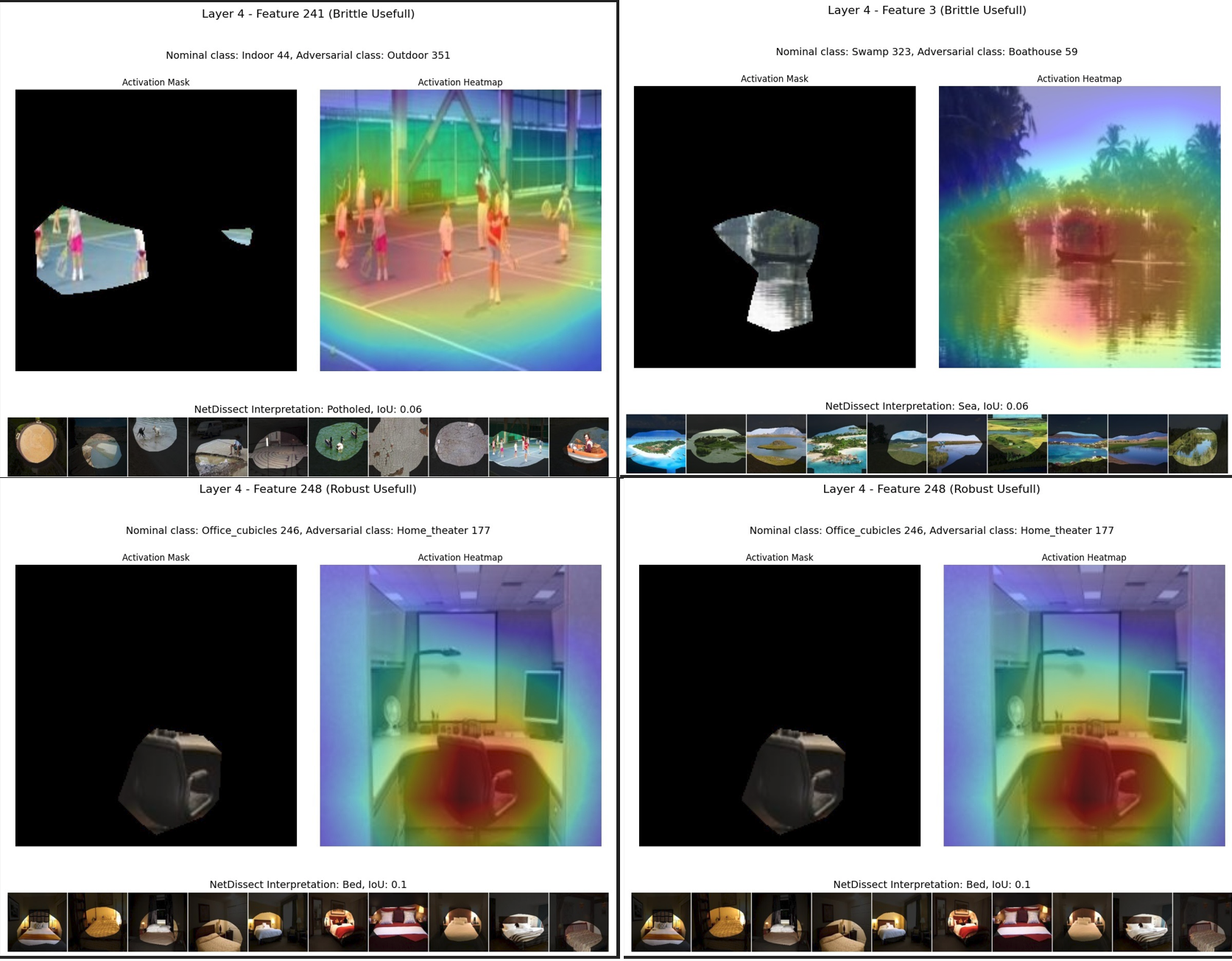Robustness Analysis of Neural Networks
Exploring techniques to analyze and robustify feature specific dissections of neural networks
What is this project about?
This project explores how neural networks break under adversarial attacks (tiny, carefully designed changes to images that trick AI models). Instead of looking at the model as a whole, it studies the problem from a feature-by-feature perspective — i.e., by examining the individual neurons that detect shapes, textures, or objects. This work was inspired by (Ilyas et al., 2019) and (Bau et al., 2020).
-
Goal: Make models more robust by:
- Finding which features are useful but fragile under attack.
- Strengthening the model to rely on robust, reliable features instead.
Problem Approach
- Features = Neurons’ activations: Each neuron (or filter) in a CNN responds to patterns like edges, colors, or objects.
- Adversarial attacks often target brittle but useful features — the ones that help with classification but flip easily when disturbed.
-
By dissecting the network:
- Assign concepts (e.g., “window,” “fur,” “wheel”) to neurons.
- Check which concepts survive or collapse under noise.
Methodology
-
Identify Features
- Measure how strongly each neuron is activated by an image.
- Pick the top activated ones = the most important features.
-
Classify Features
- Robust & Useful → strong, reliable signals.
- Non-robust & Useful → dangerous; fooled easily.
- Robust but Useless → stable but unhelpful.
- Non-robust & Useless → noise.
-
Back-Perturbation
- Instead of letting adversarial noise trick the model, “push back” with corrective perturbations.
- Create a robust dataset of images where the model learns to ignore brittle features.
Deliverables
- Layer selection strategy: Prevent shallow/deep layers from dominating feature analysis.
- Robustness classification: Map adversarially fragile features back to real-world concepts (e.g., “grass” or “brick”).
- Visual insights: Show which concepts are brittle and how training shifts reliance toward robust ones.
Impact & Implications
- For AI safety: Helps models resist adversarial attacks by teaching them to trust the “right” features.
- For interpretability: Bridges the gap between black-box AI and human-understandable concepts.
- For research: Introduces a feature-first perspective on robustness, not just loss-function tweaking.
- For real-world AI: Paves the way for more reliable vision systems in healthcare, autonomous driving, and security.

This figure visualizes regions that contributed the most to the neural network's prediction, and the concepts captured by the neurons that were activated the most.